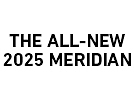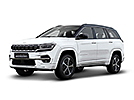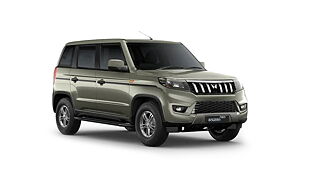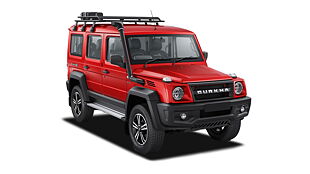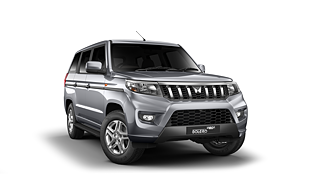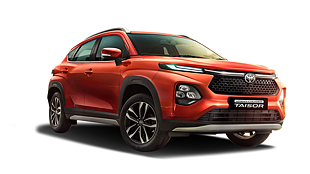Tata Sierra Turbo
|Rate & Win
- Sierra
- Specs & Features
- Variants
- User Reviews
discontinued
Variant
Turbo
City
Show price in my city
Rs. 25.00 Lakh
Last Recorded PriceTata Sierra Turbo Summary
Tata Sierra Turbo is the top model in the Sierra lineup and the price of Sierra top model is Rs. 25.00 Lakh.
Read More
Sierra Turbo Specifications & Features
- Features
- Features
Features
Safety
Braking & Traction
Locks & Security
Comfort & Convenience
Mobile App Features
Seats & Upholstery
Storage
Doors, Windows, Mirrors & Wipers
Exterior
Lighting
Instrumentation
Entertainment, Information & Communication
Manufacturer Warranty
Other Sierra Variants
| Variants | Price | Specifications | |
|---|---|---|---|
Rs. 25.00 Lakh | Get Offers from Dealers |
Sierra Alternatives
Explore Used Tata Sierra
Tata Sierra Turbo Reviews
- (2 Ratings) 2 Reviews
4.0/5
- A CAR PERFECTRLY NAMEDExterior shape looks excellent. Body parts gets rusted more quickly in comparision to other branded cars, and as result maintianing this car with its originality is not possible. Interior (Features, Space & Comfort) is good (Turbo version) and space and comfort is excellent and unmatched to any of other car untill this 2011 year. Engine Performance, Fuel Economy and Gearbox Engine performance good but drag power drops on picking in A.C. ON else is o.k. for Indian roads, where speed limit is necessary. fuel consumption on run with weight ratio is just very good. Well GearBox is a bit unresponsive and needs a frequent change in gears upto 55 km. speed, under that the clutch plate clatters. Ride Quality & Handling This is a car who can make you feel king on roads with smooth ride on speed above about 50. Handling is good. Final Words THIS IS YEAR 2011 AND TATA MUST & SHOULD LAUNCH THIS CAR AGAIN AND AM SURE COMPANY WILL HAVE A HUGE MARKET OF LOVERS AND BUYERS OF SEIRRA. Areas of improvement Body parts quality should be improved and made easily available.ROAD HOLD, LOOKS AND SAFTYWHEEL ALIGNMT. THAT DISTURBS EASILY, ILL BODY PARTS THAT RUST QUKLY, PLASTIC PARTS NOT STURDYRating parameters(out of 5)5
Exterior
5Comfort
3Performance
5Fuel Economy
4Value For Money
About the ReviewerPurchase UsedDriven forFew thousand kilometersMileage13 kmplRead MoreWas this review helpful?10 - Tata Sierra Through The AgesExterior From the outside the looks of the Sierra are neat and refined. It may not have the curves of the Safari bit it stands out in a crowd. The lines on the car are also nice though the lack of passenger doors at the back have raised some discontent among owners. Many have even opted for modifications to this design. When viewed from the side, it seems that the Sierra tends to slope to the front. The massive amount of glass on the sides does give it a look no other vehicle has on Indian roads. Interior (Features, Space & Comfort) The interiors are pretty basic with a dash that might make you think that you would rather have the stylish new ones as seen in newer cars. Some of the features that the car brings with are:- Power Windows, Power Stearing Central Locking, 1 Extra Switch For additional fittings, Brake fluid waring lamp, Foldable back seat. The back seat of the car can be folded twice, once the back is put down the seat can be lifted to a verticle position, effectively doubling the already huge amount of boot space. Engine Performance, Fuel Economy and Gearbox Since the car has been out of production since 2001 there are few vehicles that you will find with less than 80,000 km on the odometer. The performance of the engine really comes down to the condition it was kept in by the previous owmer. In my case ('99 Sierra Turbo), the engine is in excelent condition with smooth performance throughout the gears. The reported mileage of the car is upto 12 kmpl in the city and 14-15 kmpl on the highway. This definitley trumps other cars in its cader. The gearshift is smooth and requires very little effort. The turbo versions of this car are also popular but a little tough to locate now a days. The turbo ads an extra 750 cc to the 1.9 lit 1948 cc engine that the car comes with. This give the Sierra Turbo a top speed of 160 kmph, while the standard Sierra has a top speed of 130 kmph. While driving, there will be times when you won't realise what speed you are at till you take a look at the speedometer and it reads past a 100 kmph. Thats because once you are in the higher gears the acceleration is smooth and even. Ride Quality & Handling The ride quality is really excelent and the car feels really firmly planted on the road. The power stearing ensures that unless you need to make a sharp turn or need to turn the wheel a lot, you need not more than 1 hand to drive this beast. The response of the car to the stearing wheel is quick and crisp. The suspension is a combination of coil spring and Gas filled telescopic shocks both in the back and the front. There are times when the car may feel a little bouncy but that would be because of the soft suspension. There are lots of people who upgrade the tires on the car to mags. This may affect the performance of the car and make it a little sluggish in lower gears (1&2). On the highway, there is nothing like the feeling of driving the Sierra. Keep in mind though that if you are not careful then you can over/under stear easily. When you go over a bump, you may hear some shaking, but that is to be expected since the car is old and will tend shake a bit. The safety aspect of the car is also good since its buid gives it a realy sturdy structure and small fender benders wont hurt the car too much. The only thing that needs to be checked out is that after driving through about 2.5-3 ft of water, the brakes of the car seem a little sluggish as compared to the crisp performance when dry. Final Words From what I have seen, its obvious to me that a certain amount of passion is involved in the purchase of a Tata Sierra. If you do plan on buying it, think twice. My personal view is that it is a must have vehicle, its awesome in terms of comfort and is an absolute pleasure on a road trip. There may be questions about the availibilty of parts but solutions to these problems are also easily available in the form of compatible parts from other vehicles. One piece of advice though, if you have a Sierra, please dont modify it to the extent of changing the looks of the car. Areas of improvement Interiors can be improved especially the dash. Maybe get a neater look, but now its really up to the owner of the car and how much they are willing to put into the car.High Comfort, Good Fuel Economy, Sturdy Build,Availibility of parts, Soft suspension leading to Bounce, only 3 DoorsRating parameters(out of 5)4
Exterior
5Comfort
4Performance
4Fuel Economy
4Value For Money
About the ReviewerPurchase UsedDriven forFew hundred kilometersMileage14 kmplRead MoreWas this review helpful?90
Sierra Turbo FAQs
Q: What is the price of Sierra Turbo?
Sierra Turbo price is Rs. 25.00 Lakh.

